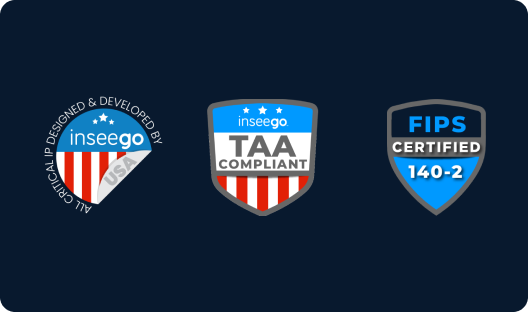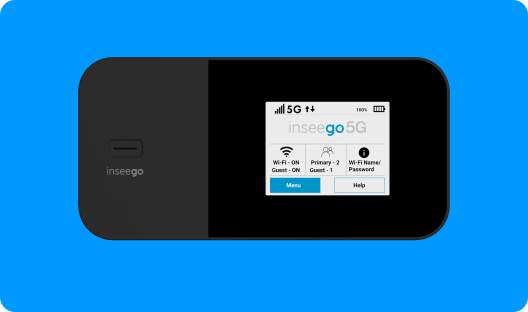Also in this category
View more in Safety & SecuritySafety & Security
Closing cybersecurity gaps with zero trust security tools and techniques

The importance of effective cybersecurity is hard to overstate. Cyberattacks are frequent and sophisticated, and networks are large, complex, and crucial to maintenance of business operations. Breaches can be costly and have significant legal ramifications.
Traditionally, networks emphasized external security and internal trust. Firewalls and other technologies focused on preventing intrusion, but anyone with the proper credentials could enter the network and move throughout it at their leisure. That approach is outdated. Digital transformation has produced multi-cloud environments, SaaS applications, and distributed workforces where even credentialed users can be potential security breaches.
This is where Zero Trust Security comes in. This security framework operates on a basic principle: “Never trust, always verify.” No entity, whether inside or outside the network, is trusted by default. Continuous authentication and authorization are required for every user and device trying to access network resources. And the tools, practices, and policies that support the Zero Trust security model provide comprehensive network protection.
The zero-trust strategy provides proactive security
Unlike traditional, reactive cybersecurity methods, where internal security protocols may only be implemented after a breach has been detected, Zero Trust security proactively monitors for threats and takes steps to prevent leaks or intrusions.
Continuous authentication and authorization are essential components of Zero Trust Security. Every access request is authenticated and authorized in real time, using diverse data points such as user identity, device status, and data classification. Dynamic policy enforcement and multi-factor authentication (MFA) are used to further verify user identities.
The principle of least privilege is another pillar. Rather than giving implicit trust to users in a network, they are instead granted the minimum amount of access required to perform their tasks. Role-based access control (RBAC) assigns permissions based on user roles within the organization. Use of just-in-time approval for temporary, time-bound access to critical resources combined with regular reviewing and adjusting of permissions to ensure they remain appropriate further minimizes risk.
Another fundamental aspect of Zero Trust Security is the assumption that the network may already be compromised. Based on this assumption, network activities are continuously monitored to detect unusual behaviors or potential security incidents, and strict validation steps for all access requests and actions within the network are needed. Your organization should also develop a robust incident response plan and perform regular audits and penetration testing to identify and fix vulnerabilities.
Network architecture must support zero trust
Implementing a Zero Trust approach effectively requires specific elements to be in place in a network architecture.
Identity and access management (IAM) plays a crucial role in verifying user identities and managing access, enforcing multi-factor authentication (MFA) to add an extra layer of security. IAM ensures that access is granted based on granular user access policies, dynamically adjusted according to real-time risk assessments.
Microsegmentation is also needed. This process involves dividing a network into smaller, isolated zones to restrict lateral movement of potential threats. By applying specific security controls and policies to each segment, organizations can limit the attack surface and contain any breaches within microsegments.
Finally, endpoint detection and response (EDR) tools help monitor device health, detect vulnerabilities, and address security issues in real time, ensuring endpoints like laptops, smartphones, and IoT devices are secure.
Effective implementation must begin with strategic analysis
Implementing Zero Trust Security in your organization isn’t the same as installing a firewall or downloading a software patch. It’s not a one-and-done process, nor one that can be purchased off the shelf. It must be approached strategically.
First, assess your existing security framework to understand its strengths and vulnerabilities. Conduct thorough audits of all applications, workloads, data flows, and devices to identify potential security gaps. Threat intelligence tools and vulnerability scanners can pinpoint weaknesses in your network, and analysis of past security incidents can show how breaches occurred. Document all findings to create a comprehensive vulnerability map.
Based on this map, define clear Zero Trust principles to follow, such as continuous authentication and least privilege access. Then, create a detailed implementation roadmap outlining the steps, timelines, and resources needed, prioritizing high-risk areas and immediate network security needs to ensure a structured transition.
Next, you should begin implementing the necessary tools and components. Deploy IAM systems, integrate EDR tools, use microsegmentation solutions, and adopt Zero Trust Network Access (ZTNA) solutions to grant secure access to applications and data.
Adoption must be accompanied by training and buy-in
The human side, however, cannot be neglected. It’s important to assess and evaluate your organizational buy-in and understanding of Zero Trust Security throughout this process. Educate all levels of the organization about the benefits and importance of Zero Trust Security, gather feedback, and address any concerns.
Challenges involved in managing the complexity of the transition and ensuring compatibility between new and existing security solutions are likely to arise. Develop a robust change management plan and use automation to streamline processes wherever possible. Regular training sessions should be held to educate employees about Zero Trust security policies, principles, and best practices, and specific training should be provided on the new tools and technologies being implemented.
Inseego is an industry leader in Zero Trust Security technologies and practices
Organizations with a robust Zero Trust architecture are better equipped to safeguard sensitive data by ensuring that only authenticated and authorized users can access critical resources. This reduces the risk of data breaches, particularly those stemming from compromised credentials or malicious insiders.
Zero Trust Security supports complex network environments, including cloud architectures, on-premises data centers, and hybrid workplaces. This makes them an ideal framework for securing remote access and distributed corporate networks. The regular audits, strict access control, and user validation can help organizations adhere to regulatory requirements and standards, such as NIST guidelines.
Inseego is an industry leader in Zero Trust Security implementations, providing solutions that enable and support effective implementation, including:
- Secure Access Service Edge (SASE), a unified, cloud-native architecture that integrates various security measures, providing secure access and enhancing the Zero Trust framework without increasing complexity
- Software-Defined Wide Area Network (SD-WAN), a network architecture that enhances network performance, security, and management, offering a reliable foundation for Zero Trust implementations
- Cloud Management, which facilitates centralized management of network security across multi-cloud environments, enabling seamless Zero Trust policy enforcement
Contact us today to learn more about how Inseego can support your efforts to implement a Zero Trust framework.










